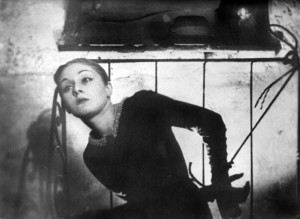At only 70 minutes, the 1932 German film “Vampyr” does more for the legend of Dracula than countless modern horror attempts such as “Dracula Untold,” or even “Dracula” (1992); though “Vampyr” is not definitively about this aged antagonist. Part of the Criterion Collection, the film was pieced together in its 1998 restoration to allow the original German version to once again see the light of day. Centering on an idyllic inn in a seaside village, the film uses music, lingering cameras, and the lack of a coherent narrator to show not vampires, but only the evidence a supernatural killer leaves behind; an homage to Bram Stoker’s 1897 classic book, though the film never once utters his antagonist’s name.
“Vampyr” does have a narrator, a man named Allen Grey, who resembles horror writer H.P. Lovecraft in not just countenance, but in how he brings the story to the audience through his utter disbelief of the events that unfold. There’s no moralizing in “Vampyr,” only events that happen, such as the death of an inn patron, and a note left in Grey’s room that reads “To be opened on the event of my death,” which leads him to the discovery of a possible vampire presence. Grey’s commonplace black suit and white shirt, as well as his disbelief at horrors he uncovers, predict almost perfectly Lovecraft’s 1936 novella “The Shadow Over Innsmouth.” Good horror shows not blood, guts, and gore, but implies unnamable nightmares hiding in the shadows. “Vampyr” is no exception.

“Vampyr” is doubtless a film, and tells its story exclusively in black and white. A scythe wielding boatman standing vigil, an iconic statue that stretches to the sky outside the macabre inn – these are the elements of the film, not masked killers stalking unsuspecting girls. However, “Vampyr” is a very slow movie, and almost certainly begs a second viewing to uncover all its secrets. Patient viewers and lovers of film will gladly plod along for the ride. However, those looking for a more inclusive or progressive plot may lose heart watching the film merely for entertainment.
Perhaps the most captivating part of the movie is its score, comprised of eerie violins and shrill noises that seem to write the book on building fear through sound. Observe a rising crescendo as Grey sees a shadow behind a door and compare it to intensity seen in horror films 50 years later, even in b movies such as “Friday the 13th.”
A host of interesting characters also make “Vampyr” an effective movie, such as the mysterious doctor who stalks the halls of the silent inn, or Maurice Schutz, who plays the Lord of the Manor. Grey himself is played in a silent but complex way by Julian West, who also produced the film and has “Vampyr” listed as his only acting credit. Joining Grey, Léone (Sybille Schmitz) is a woman suffering from a strange illness at the inn Grey determines to be a vampire’s bite, while the Lord of the Manor’s older daughter, Giséle, is present throughout as a more space-filling presence. “Vampyr” is seldom actually scary, but is eerie and captivating, a significant credit given the film’s time period and production value.
All in all, “Vampyr” is a solid film, albeit slow, that espouses horror’s finest principles. The film is spoken completely in German, and American audiences will have to rely on subtitles to wade through; though with only a 70-minute runtime, the effort probably won’t pain even impatient viewers. The film is hard to follow, shifting like a disjointed dream; however, for its score, imagery, and filmography, “Vampyr” is a decent way to spend this Halloween. Fans of classics like “Nosferatu” will most likely get the most out of this film. However, with the lights off, “Vampyr” should provide the necessary elements of old school horror.